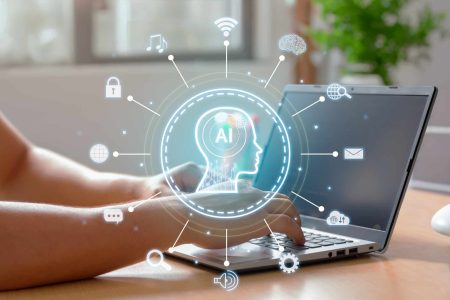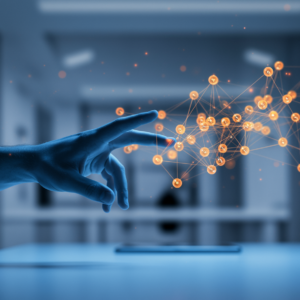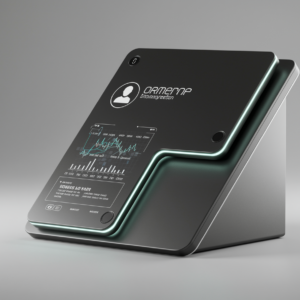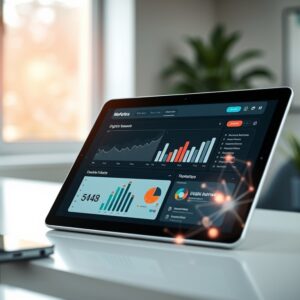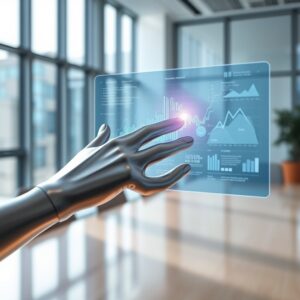Artificial Intelligence (AI) has rapidly evolved, giving rise to various types of agents, each designed to perform specific tasks and solve distinct problems. This comprehensive guide explores the essentials of AI agents, starting with an understanding of their basic concepts and progressing to the intricate details of reactive agents, delving into their fundamental characteristics and practical use cases. We then venture into model-based agents, offering a thorough overview of their working principles. Further, you will learn about goal-based agents, their applications, and the benefits they bring to various industries. Utility-based agents are discussed in-depth, emphasizing their role in making optimal decisions. As we move forward, learning agents are highlighted for their capacity to evolve and adapt over time. The section on multi-agent systems sheds light on how agents collaborate or compete within a shared environment, and the interaction with their surroundings is examined to understand how agents operate effectively. Finally, we compare different AI agents to outline their strengths and weaknesses, leading to the key takeaways that will summarize the critical insights gained from this exploration of intelligent agents.
Content
Introduction to AI Agents
Defining AI Agents
An AI agent is an autonomous entity designed to perceive its environment, make decisions, and take actions to achieve specific goals. These agents utilize algorithms and machine learning principles to solve complex problems without human intervention. They can be as simple as a rule-based system or as advanced as a self-learning neural network. By processing data and learning from experiences, AI agents can improve their performance over time. Understanding the core definition of AI agents is crucial to grasp their diverse applications and the technology behind their functioning.
History and Evolution of AI Agents
The concept of AI agents has a rich history rooted in the early days of computing and artificial intelligence research. Initially, AI agents were simple programs designed to follow predefined rules, but advancements in machine learning and neural networks have significantly evolved their capabilities. Today, AI agents can mimic human decision-making processes, learn from vast amounts of data, and adapt to new scenarios. This evolution has enabled AI agents to be implemented in various fields, from healthcare to finance, showcasing their adaptability and growing importance.
Applications of AI Agents in Various Industries
AI agents are revolutionizing industries by automating processes, improving efficiency, and enabling innovative solutions. In healthcare, AI agents assist in diagnosing diseases and personalizing treatment plans. In finance, they analyze market trends and manage investment portfolios. The retail industry uses AI agents for personalized marketing and customer service. Autonomous vehicles, powered by advanced AI agents, are transforming transportation. Even education benefits from AI agents through personalized learning experiences. The widespread application of AI agents highlights their versatility and the potential to drive significant advancements across multiple sectors.
Reactive Agents: Basics and Use Cases
Reactive agents operate on a relatively straightforward principle: they respond to changes in their environment without relying on a memory or model of the world. These agents observe their surroundings through sensors, make decisions based on current observations, and perform actions through actuators. The decision-making process is typically guided by a set of predefined rules or conditions. While reactive agents lack the ability to plan or anticipate future states, they are highly effective in dynamic environments where real-time responses are crucial. Their simplicity makes them easy to implement and computationally efficient.
A classic example of a reactive agent is a thermostat. It constantly senses the ambient temperature and reacts by turning the heating or cooling system on or off to maintain the desired temperature. Another example is an autonomous vacuum cleaner, which uses sensors to navigate around obstacles and clean a room. These agents rely on immediate sensory input to make decisions, making them suitable for tasks that require quick and straightforward responses. Despite their limitations, reactive agents are widely used in robotics, industrial automation, and simple control systems.
In more complex scenarios, reactive agents can be employed in multi-agent systems where they operate alongside other types of agents. For instance, in a warehouse setting, reactive robots can work in conjunction with more sophisticated agents to manage inventory and fulfill orders efficiently. The reactive agents handle immediate tasks like avoiding obstacles or picking items, while the more advanced agents take care of planning and optimization. This collaboration enhances overall system efficiency, demonstrating how reactive agents, despite their simplicity, play a crucial role in various applications.
Model-Based Agents: An Overview
Understanding Model-Based Agents
Model-based agents differ from reactive agents by maintaining an internal model of the world. This model allows them to interpret their perceptions in a broader context, enabling more informed and strategic decision-making. By simulating potential future states and actions, these agents assess various scenarios before taking action. This predictive capability enhances their problem-solving abilities, making them more suitable for complex tasks that require planning and foresight. The internal model consists of knowledge about the effects of actions and the state of the environment, providing the agent with a richer context for decision-making.
Benefits and Limitations of Model-Based Agents
The primary advantage of model-based agents is their ability to plan and anticipate future outcomes, which is crucial for tasks requiring strategic thinking. Their internal model also allows for adaptive behavior in dynamic environments. However, the complexity of maintaining and updating this model can be computationally intensive. The quality of the agent’s performance heavily depends on the accuracy and completeness of the model, which can be challenging to achieve. Despite these limitations, the enhanced decision-making capabilities often justify the additional computational resources, particularly in applications such as robotics, game playing, and autonomous navigation.
Real-World Applications of Model-Based Agents
Model-based agents are extensively used in fields where detailed planning and adaptability are essential. In robotics, they enable autonomous robots to navigate complex environments by predicting the outcomes of their actions. In the gaming industry, they facilitate advanced NPC (non-player character) behaviors, creating more realistic and challenging game experiences. Autonomous vehicles use model-based agents to interpret sensor data and make driving decisions that account for potential future states of the road. These applications illustrate the versatility and effectiveness of model-based agents in handling complex, dynamic tasks, making them invaluable across various industries.
Transform your business with custom AI solutions from a leading Artificial Intelligence Agency.
Goal-Based Agents: Applications and Benefits
Goal-based agents are designed with specific objectives in mind and use these goals to drive their decision-making processes. Unlike reactive agents that respond to immediate inputs or model-based agents that use internal representations, goal-based agents actively plan their actions to achieve predefined goals. This forward-thinking approach allows them to evaluate different strategies and select the one that best aligns with achieving their objectives. Goal-based agents use a combination of search algorithms and heuristics to navigate through the possible actions and identify the optimal path to their goals, making them highly efficient in complex problem-solving scenarios.
One of the primary applications of goal-based agents is in autonomous navigation systems. For example, in self-driving cars, goal-based agents are used to plan routes and make real-time decisions that ensure the vehicle reaches its destination safely and efficiently. The agent constantly updates its plan based on the current state of the environment, such as traffic conditions or road closures, enabling it to adapt and find alternate routes when necessary. In logistics, goal-based agents optimize supply chain operations by planning the most efficient routes for delivery trucks, reducing costs and improving delivery times.
The benefits of goal-based agents extend to numerous other fields as well. In the realm of artificial intelligence research, goal-based agents are used to develop advanced problem-solving applications, such as automated theorem proving or complex game playing. In healthcare, they assist in planning personalized treatment plans for patients by analyzing vast datasets and predicting the outcomes of different interventions. By focusing on achieving specific objectives, goal-based agents introduce a level of autonomy and intelligence that significantly enhances the performance and reliability of various AI-driven systems, leading to more innovative and effective solutions across industries.
Experience effortless, cost-effective social media management with AI technologies
Utility-Based Agents: Making Optimal Decisions
Understanding Utility Functions
Utility-based agents operate on the principle of maximizing a utility function, which quantifies the desirability of different outcomes. The utility function maps an action or series of actions to a numerical value representing its effectiveness in achieving the agent’s goals. By evaluating these values, the agent can make decisions that lead to the highest possible utility. This approach allows for more nuanced decision-making compared to goal-based or reactive agents, as it considers multiple factors and trade-offs. Utility functions are particularly useful in environments where agents must balance competing goals or preferences.
Implementing Utility-Based Decision Making
To implement a utility-based agent, developers need to define a clear utility function that accurately reflects the agent’s objectives. This involves identifying key performance indicators and assigning weights to them based on their importance. The agent then uses algorithms to evaluate different actions, calculating the expected utility for each. By comparing these values, the agent selects the action with the highest expected utility. This method is highly flexible, allowing the agent to adapt its decisions based on changing conditions and new information, making it ideal for dynamic and uncertain environments.
Applications of Utility-Based Agents
Utility-based agents are widely used in areas where optimal decision-making is critical. In finance, they help in portfolio management by balancing risk and return to maximize investment utility. E-commerce platforms use utility-based agents for personalized recommendations, optimizing the balance between user preferences and business goals. In autonomous systems, such as drones or robotic delivery services, utility-based agents make real-time decisions to optimize routes, energy consumption, and task prioritization. These applications highlight the versatility and effectiveness of utility-based agents in achieving optimal outcomes across diverse and complex scenarios.
Learning Agents: Evolution and Adaptation
Learning agents are designed to continuously improve their performance over time by learning from their experiences. Unlike other types of agents that operate based on predefined rules or static models, learning agents evolve by observing and analyzing their actions and the outcomes. They employ various machine learning techniques, such as supervised learning, reinforcement learning, and unsupervised learning, to refine their decision-making processes. This adaptability allows them to handle novel situations and improve their effectiveness in dynamic environments. By incorporating feedback mechanisms, learning agents can adjust their behaviors and strategies to meet the changing demands of their tasks.
A significant application of learning agents is in the field of personalized recommendations. Streaming services like Netflix and Spotify utilize learning agents to analyze user behavior and preferences, continually refining their algorithms to offer highly tailored content suggestions. In e-commerce, learning agents help optimize user experiences by adapting to individual shopping patterns and predicting future purchases. Additionally, these agents are used in predictive maintenance for industrial machinery, where they learn from operational data to foresee equipment failures and suggest proactive measures. This continuous learning capability helps businesses enhance efficiency, customer satisfaction, and operational reliability.
The benefits of learning agents extend to areas requiring advanced problem-solving and autonomous decision-making. In healthcare, for example, learning agents support diagnostics and treatment planning by learning from clinical data and patient outcomes. Autonomous vehicles rely heavily on learning agents to navigate complex driving environments, learning from vast datasets to improve safety and efficiency. Moreover, in financial services, these agents analyze market trends and adapt trading strategies in real-time, providing a competitive edge. The inherent ability of learning agents to evolve and adapt ensures they remain relevant and effective across a wide range of applications, driving innovation and facilitating intelligent automation.
Elevate your business with DIGITALON AI’s custom AI services and solutions.
Multi-Agent Systems: Collaboration and Competition
Cooperative Multi-Agent Systems
Cooperative multi-agent systems consist of multiple agents working together to achieve a common goal. These agents share information, coordinate their actions, and leverage their collective capabilities to tackle complex tasks that would be difficult for a single agent to accomplish. Cooperation requires effective communication protocols and strategies for conflict resolution, ensuring that all agents align their efforts towards the shared objective. Applications of cooperative multi-agent systems are widespread, including autonomous vehicle fleets that coordinate to optimize traffic flow, robotic teams in manufacturing processes, and collaborative search and rescue missions. The synergy among agents enhances overall system performance and efficiency.
Competitive Multi-Agent Systems
In competitive multi-agent systems, agents operate with conflicting goals, often attempting to outperform or undermine each other. This competition can drive innovation, as agents continuously adapt and improve their strategies to gain an edge. Competitive environments are common in areas such as finance, where trading algorithms compete in the market, and in gaming, where AI opponents challenge human players or other AI agents. The interactions in competitive multi-agent systems often involve sophisticated game theory principles, where agents must anticipate rivals’ actions and respond accordingly. This dynamic can lead to highly refined behaviors and robust decision-making capabilities.
Hybrid Multi-Agent Systems
Hybrid multi-agent systems combine elements of both cooperation and competition, creating environments where agents may collaborate in some scenarios while competing in others. These systems reflect real-world situations where entities have overlapping interests but also areas of conflict. For instance, in supply chain management, different companies might cooperate on logistics to reduce costs while competing on product offerings and market share. Hybrid multi-agent systems require advanced strategic planning and adaptability, as agents need to navigate complex social dynamics and shifting alliances. This versatility makes hybrid systems particularly effective in scenarios that mirror the nuanced interactions found in human and economic systems.
Environment Interaction: How Agents Operate
Agents interact with their environment through a cycle of perceiving inputs, processing data, and taking actions. Sensors play a critical role in this process, providing the agent with real-time data about its surroundings. This sensory information is then analyzed to determine the current state of the environment. Depending on the complexity and design of the agent, this data may be used immediately for reactive responses or fed into a model for more strategic decision-making. Actuators execute the agent’s decisions, allowing it to interact physically with the world. This continuous loop of perception, processing, and action enables agents to operate efficiently within their environment.
In dynamic environments, agents must be capable of adapting to changes and unforeseen circumstances. For example, an autonomous drone must navigate through varying weather conditions, obstacles, and potential malfunctions. To handle such unpredictability, agents often employ adaptive algorithms that allow them to learn from new data and experiences. Reinforcement learning is commonly used, where agents receive feedback based on the outcomes of their actions and adjust their strategies accordingly. This adaptability is crucial for maintaining functionality and achieving goals in ever-changing settings, ensuring that agents remain effective despite environmental variability.
The interaction of agents with their environment also involves complex multi-modal data processing. Agents may need to combine inputs from various sensors, such as visual, auditory, and tactile data, to form a coherent understanding of their surroundings. In a self-driving car, for example, LIDAR, cameras, and radar systems work together to create an accurate model of the driving environment. By integrating diverse data streams, agents can make more informed decisions and respond to subtler environmental cues. This multi-sensor integration enhances the reliability and robustness of the agents’ operations, enabling them to perform well in diverse and challenging scenarios.
Comparing Different AI Agents: Strengths and Weaknesses
Reactive Agents: Simplicity vs. Limitation
Reactive agents are advantageous because of their simplicity and speed in decision-making, which make them ideal for real-time applications and environments where immediate responses are critical. Their lack of an internal model allows for rapid execution of predefined rules based on current sensory input. However, this simplicity also imposes significant limitations. Reactive agents cannot plan for future events or adjust their actions based on historical data, resulting in less adaptability and foresight. This restricts their effectiveness to relatively straightforward tasks, such as basic robotic functions or simple control systems, leaving them unsuitable for more complex or strategic applications.
Model-Based Agents: Flexibility vs. Complexity
Model-based agents bring the advantage of flexibility and foresight, as they use an internal model to interpret and predict the outcomes of their actions. This ability to simulate various scenarios allows for more strategic decision-making, making them well-suited for complex tasks such as autonomous navigation or sophisticated game playing. However, the complexity of maintaining and updating this internal model can be computationally demanding. The accuracy and robustness of model-based agents heavily rely on the quality of the model, which can be challenging to achieve and require significant computational resources. This trade-off between flexibility and complexity needs careful consideration based on the application’s requirements.
Learning Agents: Adaptability vs. Learning Curve
Learning agents excel in adaptability, continually enhancing their performance by learning from experiences and data. This makes them highly effective in dynamic and evolving environments, such as personalized recommendation systems or autonomous vehicles. Their ability to improve over time ensures that they stay relevant and effective in various scenarios. However, the learning process can introduce a steep initial learning curve, requiring substantial amounts of data and time to train effectively. Additionally, there may be periods of trial and error, during which the agent’s performance may not be optimal. Balancing the need for sufficient training with the requirement for immediate utility poses a significant challenge in implementing learning agents.
Conclusion: Key Takeaways on AI Agents
AI agents offer a diverse range of capabilities, each suited to different types of tasks and environments. Reactive agents, known for their simplicity and immediate response capabilities, excel in scenarios requiring fast and straightforward actions, such as basic robotic tasks and simple control systems. However, their inability to plan or learn from past experiences limits their applicability to more complex challenges. On the other hand, model-based agents bring flexibility and strategic foresight by utilizing internal models to predict outcomes, making them suitable for tasks requiring careful planning and decision-making. The trade-off here involves managing the computational complexity and ensuring the accuracy of these internal models.
Learning agents represent a significant evolution in AI, characterized by their adaptability and ongoing improvement through experience. These agents are particularly effective in dynamic and evolving environments, where they can continuously update their knowledge base and adjust their strategies accordingly. While their ability to learn and adapt is a significant advantage, it also introduces challenges related to the need for extensive data and a potentially steep learning curve. Balancing immediate performance with long-term learning requires careful consideration and strategic planning.
The exploration of different types of AI agents highlights the importance of selecting the right type of agent based on specific needs and constraints. The strengths and weaknesses of reactive, model-based, and learning agents underline the necessity of understanding the task’s nature and the environment in which the agent will operate. Combining various types of agents in hybrid and multi-agent systems can leverage their unique advantages, leading to more robust and efficient solutions. By considering these key takeaways, businesses and researchers can make informed decisions on deploying AI agents to optimize performance and achieve desired outcomes in diverse applications.












